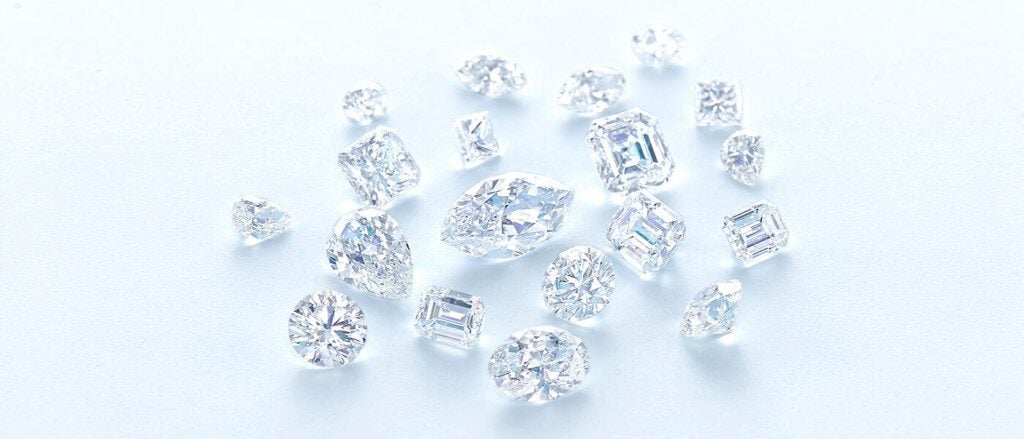1. Introduction
What are IGI and GIA?
In the world of diamonds, two prominent names stand out when it comes to certification and grading – the International Gemological Institute (IGI) and the Gemological Institute of America (GIA). With the increasing popularity of lab-grown diamonds, understanding the distinctions between these two entities becomes crucial for consumers looking to make informed purchasing decisions.
Rise of Lab-Grown Diamonds
Lab-grown diamonds have emerged as a viable alternative to natural diamonds, offering ethical and sustainable options without compromising on quality or beauty. As the demand for these diamonds grows, so does the importance of reliable certification and grading standards.
2. Understanding IGI
History and Reputation
The International Gemological Institute (IGI) boasts a rich history spanning several decades. Established in Antwerp, Belgium, in 1975, IGI quickly gained recognition as a leading authority in gemological research and education. Over the years, IGI has built a reputation for its thorough certification process and commitment to excellence.
Certification Process
IGI employs rigorous testing methods to evaluate the authenticity and quality of diamonds. From assessing the 4Cs – cut, color, clarity, lab grown diamonds, and carat weight – to detecting treatments or enhancements, IGI’s certification process ensures that consumers receive accurate information about their diamond’s attributes.
Quality Standards
IGI adheres to strict quality standards to maintain the integrity of its certifications. Each diamond undergoes comprehensive examination by experienced gemologists, ensuring consistency and reliability in the grading process.
3. Understanding GIA
Background and Credibility
The Gemological Institute of America (GIA) is renowned worldwide for its expertise in gemology and diamond grading. Established in 1931, GIA has set the standard for diamond certification and education, earning the trust of consumers and industry professionals alike.
Grading Process
GIA employs a meticulous grading process that assesses the characteristics of each diamond with precision and accuracy. Utilizing state-of-the-art equipment and extensive research, GIA ensures that its grading reports provide comprehensive information for consumers.
Consistency and Accuracy
One of the hallmarks of GIA’s grading system is its consistency and accuracy. Whether it’s a natural or lab-grown diamond, GIA maintains stringent standards to deliver reliable evaluations that are trusted worldwide.
4. Lab-Grown Diamonds
Definition and Production
Lab-grown diamonds are created through advanced technological processes that replicate the conditions under which natural diamonds form in the earth’s mantle. By utilizing high pressure and high temperature (HPHT) or chemical vapor deposition (CVD) methods, scientists can produce diamonds with identical physical and chemical properties to natural ones.
Quality Comparison
Lab-grown diamonds are often indistinguishable from natural diamonds to the naked eye. They exhibit the same brilliance, fire, and durability, making them a desirable choice for consumers seeking affordable luxury without the environmental and ethical concerns associated with mining.
5. igi vs gia Lab-Grown
Certification Comparison
Both IGI and GIA offer certification services for igi vs gia lab grown, providing consumers with assurance regarding the quality and authenticity of their purchases. While IGI and GIA certifications are respected in the industry, some differences exist in their grading criteria and reporting formats.
Grading Standards Comparison
IGI and GIA employ different grading scales and terminology when evaluating lab-grown diamonds. While both institutes assess the 4Cs, variations in grading methodologies may result in slight discrepancies in the final grade assigned to a diamond.
6. Which to Choose?
Factors to Consider
When choosing between IGI and GIA certifications for lab-grown diamonds, several factors should be taken into account. These include personal preferences, budget constraints, and the specific requirements of the purchase.
Personal Preferences
Some consumers may prefer the comprehensive reports offered by GIA, while others may find IGI’s certification process more accessible and cost-effective. Ultimately, the choice between IGI and GIA certifications depends on individual priorities and priorities.
7. Conclusion
Summary and Final Thoughts
In conclusion, both IGI and GIA play vital roles in the certification and grading of lab-grown diamonds. While each institute has its strengths and areas of expertise, consumers can trust either certification to provide accurate and reliable information about their diamond purchases. Whether it’s an IGI or GIA-certified diamond, the beauty and quality of lab-grown diamonds remain unparalleled in the world of jewelry.

